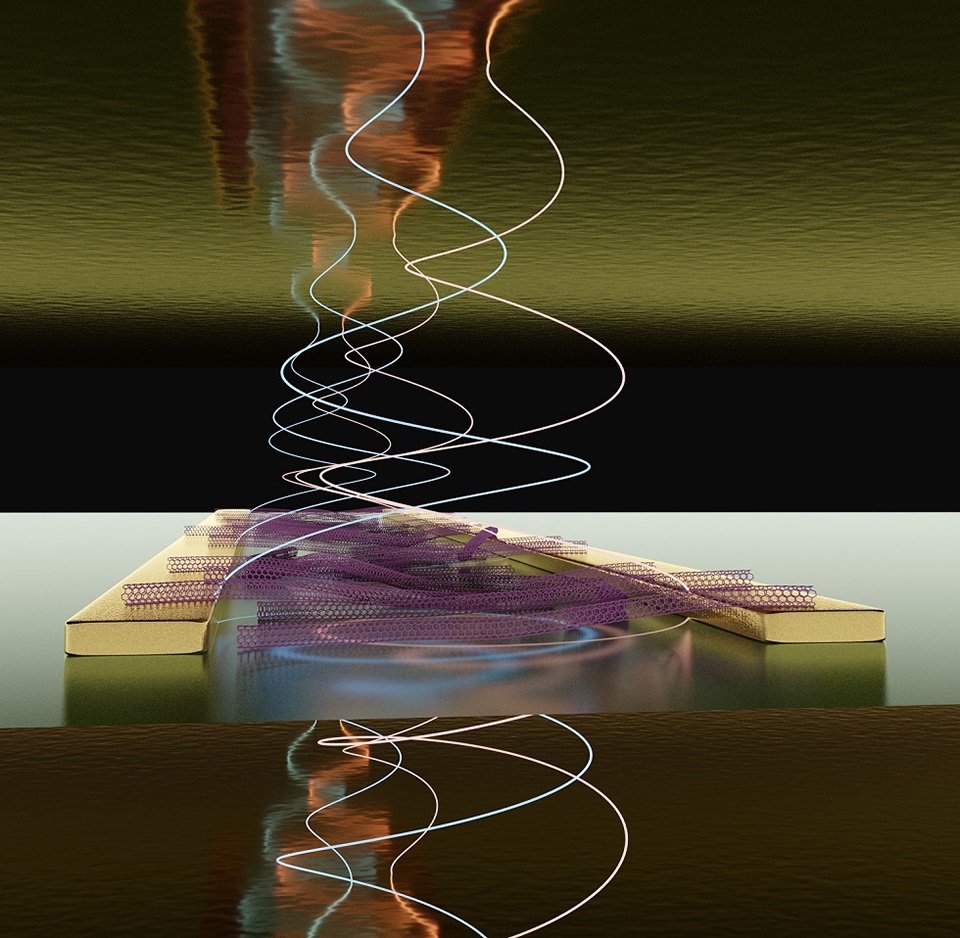24 July 2017
Light-matter quasi-particles can be generated electrically in semiconducting carbon nanotubes. Material scientists and physicists from Heidelberg University (Germany) and the University of St Andrews (Scotland) used light-emitting and extremely stable transistors to reach strong light-matter coupling and create exciton-polaritons. These particles may pave the way for new light sources, so-called electrically pumped polariton lasers, that could be manufactured with carbon nanotubes. These findings, published in "Nature Materials", are the result of a cooperation between Prof. Dr Jana Zaumseil (Heidelberg) and Prof. Dr Malte C. Gather (St Andrews).
In recent years, research on organic, carbon-based semiconductors for optoelectronic components has led to a variety of applications. Among them are light-emitting diodes for energy-efficient, high-resolution smartphone and TV screens. Despite the rapid progress in this area, realising an electrically pumped laser from organic materials remains elusive. To get closer to this goal, researchers in Heidelberg and St Andrews are working on coupling light and matter in semiconducting carbon nanotubes – microscopically small, tube-shaped structures of carbon.
When photons (light) and excitons (matter) are made to exchange energy fast enough they form new quasi-particles, known as exciton-polaritons, that also emit light. Under certain conditions these emissions can take on the properties of laser light. Prof. Zaumseil explains that exciton-polaritons are currently investigated as a new way to generate laser-like light from organic materials and research in this area has increased significantly.
The team of researchers around Prof. Zaumseil and Prof. Gather previously showed that it is possible to form exciton-polaritons in semiconducting carbon nanotubes. But they used an external laser to stimulate the formation of the light-emitting quasi-particles. In their current experiments, the researchers showed that it is possible to use electricity to generate these particles. To achieve this, they developed a light-emitting transistor with a dense layer to semiconducting carbon nanotubes that was embedded between two metallic mirrors.
Because of the extreme stability and high conductivity provided by the carbon nanotubes in this device, current densities and thus polariton densities were orders of magnitude above any previously reported values. Calculations by PhD student Arko Graf – one of the two lead authors of the study, show that the demonstration of an electrically pumped polariton laser is within realistic reach. As the emission of these light sources can be tuned across a wide range of the near-infrared spectrum, this work holds particular promise for applications in telecommunications.
Original publication
A. Graf, M. Held, Y. Zakharko, L. Tropf, M.C. Gather and J. Zaumseil: Electrical pumping and tuning of exciton-polaritons in carbon nanotube microcavities. Nature Materials (published online 17 July 2017), doi: 10.1038/nmat4940















